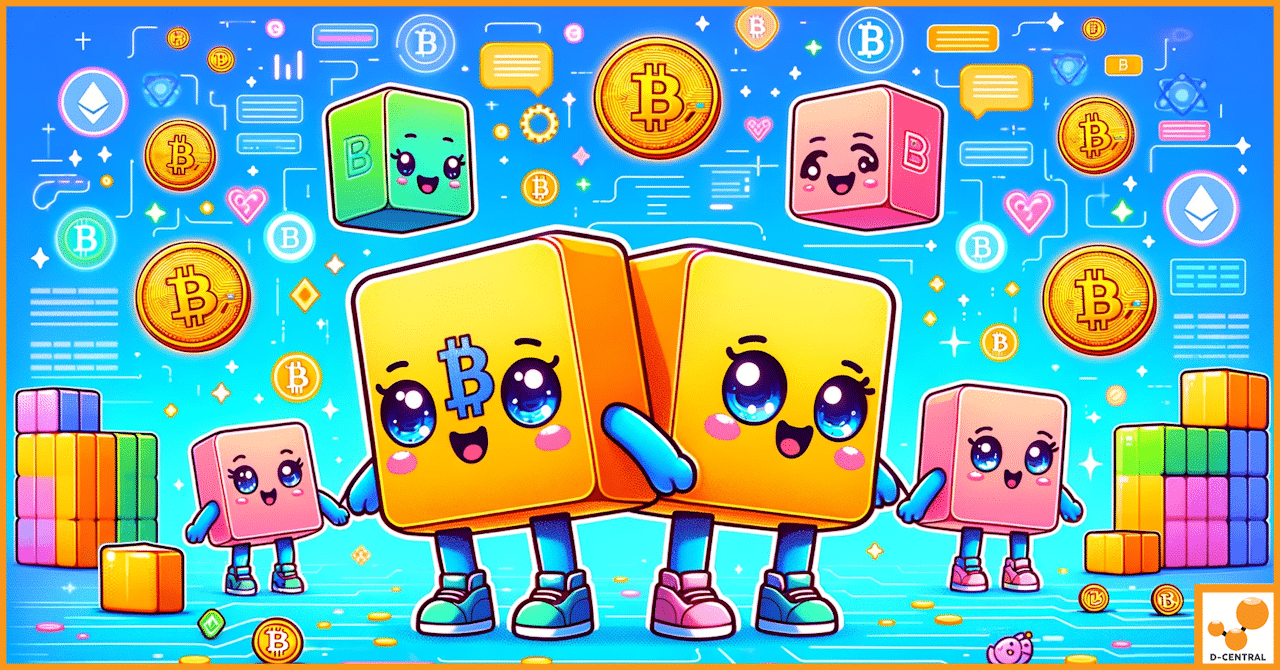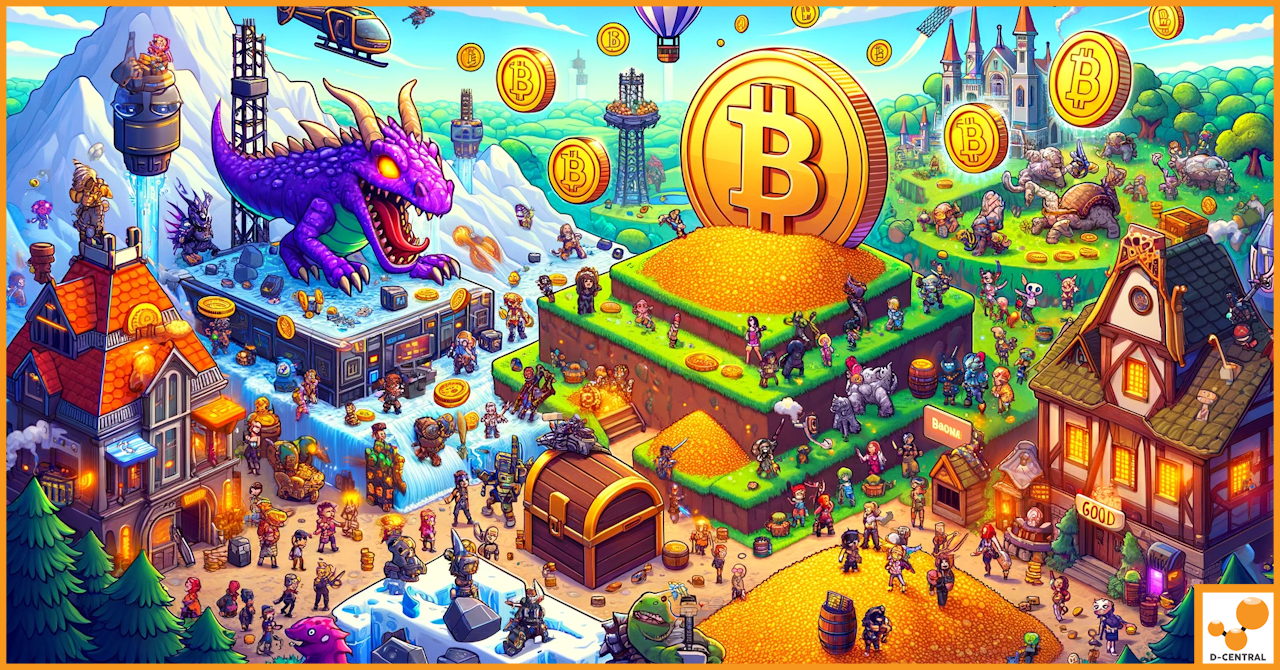
Understanding the Bitcoin Block Size Limit Debate and Its Implications
Bitcoin, the pioneering cryptocurrency, has revolutionized the way we think about money and financial transactions. At its core, Bitcoin operates
4479 Desserte Nord Autoroute 440, Laval, QC H7P 6E2

In the digital age, the concept of currency has transcended beyond the tangible notes and coins to embrace a virtual form, revolutionizing how we perceive value and trade. Digital currencies, existing solely in the electronic realm, have emerged as a pivotal element in both online gaming worlds and the broader financial landscape. At the forefront of this digital currency evolution are three distinct yet intriguing entities: Bitcoin, World of Warcraft (WoW) Gold, and Fortnite’s V-Bucks.
Bitcoin, the first and most renowned cryptocurrency, has challenged traditional financial paradigms with its decentralized nature and blockchain technology. It represents more than just a digital currency; it’s a symbol of financial autonomy and innovation. On the other hand, WoW Gold, the lifeblood of the famed MMORPG World of Warcraft, serves as the cornerstone of its vast in-game economy, dictating the dynamics of trade and progression within the game. Similarly, Fortnite’s V-Bucks, a relatively newer entrant, has rapidly gained prominence in the gaming community, becoming an essential tool for in-game purchases and customization in one of the world’s most popular battle royale games.
While these digital currencies operate in distinctly different realms – one in the complex world of decentralized finance and the others in the immersive universes of online gaming – they share underlying similarities that reflect the changing face of currency in a digital world. This article aims to delve into the nuances of these digital currencies, exploring their similarities and differences, and unraveling how they are reshaping the concepts of value, trade, and economy in both virtual and real-world contexts.
The realm of digital currencies, a once-niche area of finance and technology, has burgeoned into a significant force, reshaping our understanding of monetary value and transactions. At its core, a digital currency is a form of currency that exists solely in digital or electronic form. Unlike traditional physical currencies, digital currencies are intangible and typically operate on decentralized networks or within specific online communities.
The evolution of digital currencies can be traced back to the late 20th century, with the advent of the internet catalyzing a new era of digital innovation. The initial concept was rooted in creating a currency free from governmental control and the limitations of physical borders, leading to the development of various forms of digital money, including e-cash and virtual currencies used in online gaming.
The breakthrough came with the introduction of Bitcoin in 2009, a decentralized cryptocurrency that offered a peer-to-peer electronic cash system without the need for a central authority. Its underlying technology, blockchain, provided a secure and transparent way to record transactions, garnering immense interest and paving the way for numerous other cryptocurrencies.
Parallel to the rise of cryptocurrencies, virtual economies within online games started gaining traction. Games like World of Warcraft introduced their in-game currency, WoW Gold, creating a complex economy where players could earn, trade, and spend within the game’s universe. Similarly, Fortnite’s introduction of V-Bucks revolutionized in-game transactions, allowing players to purchase a range of items and experiences, further integrating real-world value into virtual worlds.
The growing influence of these virtual economies is evident in their impact on real-world financial systems. They have not only created new markets and opportunities but also posed unique challenges and questions regarding regulation, value, and security. The digital age has thus seen the transformation of currency from a physical entity to a multifaceted digital concept, encompassing both the decentralized, open-world of cryptocurrencies and the closed-loop economies of online gaming platforms. This shift signifies a broader change in how value is created, exchanged, and perceived in an increasingly digital world.
Bitcoin, since its inception, has been a revolutionary force in the world of finance, heralding a new era of cryptocurrency. Its history dates back to 2008 when an individual or group under the pseudonym Satoshi Nakamoto published the Bitcoin whitepaper. This document outlined a vision for a decentralized digital currency, free from the control of any central authority, a concept that would soon change the landscape of modern finance.
The development of Bitcoin was rooted in the idea of creating a peer-to-peer electronic cash system. This system was designed to allow direct transactions between parties without the need for intermediaries like banks. In 2009, Bitcoin was officially launched with the mining of the first block, known as the Genesis Block, marking the birth of the first decentralized cryptocurrency.
The key features of Bitcoin are foundational to its appeal and function:
Bitcoin’s impact on the financial world has been profound. It has challenged traditional notions of what currency is and can be. It has sparked the creation of thousands of other cryptocurrencies, each aiming to solve various issues. Bitcoin has also paved the way for a plethora of blockchain-based applications beyond just currency.
In its current status, Bitcoin has evolved from an obscure digital token to a widely recognized financial asset. It has attracted the attention of individual investors, major corporations, and even governments. While it has faced its share of volatility and regulatory scrutiny, Bitcoin continues to be a significant player in the financial world, symbolizing the potential of digital currencies to reshape the future of money.
World of Warcraft (WoW), since its launch in 2004 by Blizzard Entertainment, has not only been a landmark in the world of massively multiplayer online role-playing games (MMORPGs) but also a pioneer in establishing a robust in-game economy. This virtual economy is primarily driven by WoW Gold, the game’s currency, which has become a quintessential element of the gaming experience.
Introduction to World of Warcraft and Its In-Game Economy
World of Warcraft immerses players in a rich, fantasy world where they embark on quests, battle enemies, and interact with other players. At the heart of this interaction is the game’s economy, resembling real-world economic systems. Players earn WoW Gold through various activities like completing quests, defeating enemies, selling items, and trading with other players. This economy is not just a superficial feature; it plays a crucial role in the game’s mechanics and player engagement.
The Role and Acquisition of WoW Gold Within the Game
WoW Gold is the lifeblood of the World of Warcraft economy. It is used for a multitude of transactions, from purchasing equipment, mounts, and consumables to paying for services like crafting or raiding. The acquisition of Gold is a central aspect of the game, influencing a player’s progress and overall experience. Players can earn Gold through traditional means like looting, crafting, and trading in the Auction House, where supply and demand dictate the prices of items and resources.
Real-World Value and the Secondary Market for WoW Gold
Perhaps the most intriguing aspect of WoW Gold is its real-world value. While Blizzard Entertainment does not officially support the direct exchange of WoW Gold for real money, a vibrant secondary market exists. In this market, players buy and sell Gold for real currency, often through third-party websites. This phenomenon has led to various economic discussions and concerns, such as the impact of ‘Gold farming’ and its ethical implications.
The existence of this secondary market highlights the significant value players place on in-game assets and their willingness to invest real money for virtual gains. It also raises questions about the legal and economic status of virtual goods and currencies in the digital age. WoW Gold, in this context, serves as a pioneering example of how virtual currencies in gaming can transcend the digital realm, influencing real-world economies and setting a precedent for future virtual economies.
Fortnite, developed by Epic Games, has rapidly ascended to become one of the most popular and culturally significant online video games in recent years. This battle royale game, known for its vibrant graphics, dynamic gameplay, and cross-platform compatibility, has redefined the landscape of online gaming. Central to its economic model and player engagement is its in-game currency, V-Bucks.
Overview of Fortnite and the Role of V-Bucks
Fortnite stands out with its unique blend of survival, exploration, and combat elements, attracting millions of players worldwide. Within this game, V-Bucks function as the primary currency, playing a pivotal role in the Fortnite experience. V-Bucks are used to purchase a wide range of items in the game, including skins, emotes, battle passes, and other cosmetic items. These purchases are purely aesthetic and do not confer any competitive advantage, aligning with the game’s philosophy of maintaining a level playing field for all players.
How V-Bucks are Earned and Spent within Fortnite
V-Bucks can be obtained in several ways. Players can earn them through completing in-game challenges and progressing through the tiers of the game’s battle pass. However, the most direct method is purchasing them with real-world money. The game offers various V-Bucks packages, providing players with the flexibility to spend according to their preferences and needs.
Once acquired, players spend V-Bucks in the in-game store, which regularly updates with new items, keeping the content fresh and engaging. This model of in-game purchases has been a significant revenue driver for Fortnite, demonstrating the effectiveness of microtransactions in free-to-play games.
Comparison with Traditional Microtransaction Models
Fortnite’s V-Bucks system represents a modern iteration of the microtransaction model. Unlike traditional models where microtransactions could potentially influence game outcomes or player advantages, Fortnite maintains a cosmetic-only approach. This strategy has been widely praised for not promoting a “pay-to-win” environment, thus preserving the game’s integrity and fairness.
Moreover, Fortnite’s model has influenced the broader gaming industry, setting a standard for how microtransactions can be implemented ethically and successfully. The game’s ability to generate substantial revenue through V-Bucks while maintaining a free-to-play model showcases a successful balance between profitability and player satisfaction, a benchmark for future games in the industry.
The digital currencies of Bitcoin, World of Warcraft (WoW) Gold, and Fortnite’s V-Bucks, though operating in different realms, share intriguing parallels that shed light on the evolving nature of virtual economies and user engagement in the digital age.
Digital Nature: Virtual Existence and Digital Transaction Methods
At their core, Bitcoin, WoW Gold, and V-Bucks are embodiments of the digital age, existing entirely in virtual spaces and utilizing digital transaction methods. This digital nature allows for instant, borderless transactions, a feature that traditional physical currencies cannot match. Bitcoin transactions occur over a decentralized blockchain network, offering a high level of security and transparency. In contrast, WoW Gold and V-Bucks transactions are confined within their respective gaming platforms, controlled and facilitated by the game developers. This digital framework enables a seamless and efficient exchange of value, tailored to the specific needs and contexts of their users.
User Engagement: How Each Currency Drives User Interaction Within Its Platform
Each of these digital currencies plays a significant role in user engagement and the overall experience within their platforms. Bitcoin, with its decentralized and open-source nature, has created a community of users who are not only investors but also contributors to its ecosystem. It engages users in a broader conversation about financial autonomy and the future of money.
In the gaming world, WoW Gold is integral to the player experience in World of Warcraft, driving the in-game economy and influencing player strategies and progress. It fosters a sense of achievement and status within the game’s community. Similarly, Fortnite’s V-Bucks enhance user engagement by allowing players to personalize their experience through cosmetic items. This customization adds an element of self-expression to the game, deepening the player’s connection to the game world.
Value and Exchange: The Perceived Value and Exchange Mechanisms
The perceived value and exchange mechanisms of these currencies highlight their roles in their respective economies. Bitcoin’s value is determined by market demand, similar to traditional assets, and can be exchanged for fiat currencies, making it a bridge between the digital and real-world economies. Its limited supply and increasing adoption have solidified its status as a store of value and medium of exchange.
WoW Gold’s value is tied to its utility within the World of Warcraft universe. It is acquired through in-game activities and can be used to purchase in-game items and services. Its value is also influenced by the game’s dynamics and the player community. The secondary market for WoW Gold, where it is traded for real money, further underscores its perceived value beyond the game.
V-Bucks, primarily used for cosmetic purchases in Fortnite, derive their value from the desirability of these items within the game’s community. The currency’s value is controlled by Epic Games, with V-Bucks acting as a tool for monetizing user engagement in a free-to-play model.
The parallels between Bitcoin, WoW Gold, and V-Bucks reveal the diverse yet interconnected nature of digital currencies. They each represent a unique blend of technology, economy, and community engagement, reflecting the multifaceted impact of digitalization on currency and value exchange.
While Bitcoin, WoW Gold, and Fortnite’s V-Bucks share common ground as digital currencies, their paths diverge significantly when it comes to regulation, utility, and acceptance. These differences highlight the varied roles and perceptions of digital currencies in today’s world.
Regulatory Landscape: Bitcoin vs. In-Game Currencies
The regulatory landscape for Bitcoin is markedly different from that of in-game currencies like WoW Gold and V-Bucks. As a decentralized cryptocurrency, Bitcoin operates outside the purview of traditional financial institutions, leading to a complex and evolving regulatory environment. Governments and financial authorities worldwide are grappling with how to classify, regulate, and tax Bitcoin transactions. Issues such as anti-money laundering (AML) and know your customer (KYC) compliance are at the forefront of this regulatory challenge.
In contrast, in-game currencies like WoW Gold and V-Bucks are governed by the rules and terms of service set by their respective game developers, Blizzard Entertainment and Epic Games. These currencies are not recognized as legal tender outside their gaming platforms, and thus, they largely escape the regulatory scrutiny and financial regulations applicable to cryptocurrencies like Bitcoin.
Utility and Scope: Real-World Application of Bitcoin Compared to the Confined Use of WoW Gold and V-Bucks
The utility and scope of Bitcoin extend far beyond those of WoW Gold and V-Bucks. Bitcoin functions as a digital asset and a potential investment vehicle, with real-world applications that include online purchases, remittances, and even as a reserve asset for some companies. Its decentralized nature offers an alternative to traditional banking and financial systems, with proponents viewing it as a hedge against inflation and currency devaluation.
On the other hand, WoW Gold and V-Bucks are confined to their respective virtual worlds. Their primary utility lies in enhancing the gaming experience – WoW Gold by facilitating in-game transactions and progression, and V-Bucks by allowing players to acquire cosmetic items. While there is a secondary market for WoW Gold, it exists in a legal gray area.
Market Dynamics and User Base: The Diverse Audiences and Uses of Each Currency
The market dynamics and user bases of Bitcoin, WoW Gold, and V-Bucks are distinct, reflecting the diverse nature of digital currencies. Bitcoin appeals to a broad audience, including tech enthusiasts, investors, and individuals looking for alternative financial systems. Its market is global and influenced by a wide range of factors, including technological developments, regulatory news, and macroeconomic trends.
In contrast, the user base for WoW Gold and V-Bucks is primarily gamers. These currencies cater to specific communities – players of World of Warcraft and Fortnite, respectively. The demand and value of these in-game currencies are closely tied to the popularity and engagement levels of their games, making their market dynamics quite different from those of Bitcoin.
The paths of Bitcoin, WoW Gold, and V-Bucks diverge significantly in terms of regulation, utility, and market dynamics. This divergence underscores the multifaceted nature of digital currencies and their varying roles and perceptions in the digital economy.
In the digital currency landscape, security and anonymity are critical issues, each presenting unique challenges in the contexts of Bitcoin, WoW Gold, and Fortnite’s V-Bucks. While these currencies have inherent security measures, they also face risks related to fraud, theft, and misuse, including sophisticated methods of money laundering.
Security Measures for Each Currency
Anonymity and Its Implications
Challenges of Fraud, Theft, and Misuse
While digital currencies offer innovative transaction methods, they also bring complex security and anonymity challenges. Addressing these issues requires a multifaceted approach, combining technological solutions, vigilant governance, and informed user practices to mitigate risks and ensure the integrity of these digital ecosystems.
The exploration of Bitcoin, World of Warcraft (WoW) Gold, and Fortnite’s V-Bucks reveals the dynamic and multifaceted nature of digital currencies in today’s digital age. Each currency, while operating in distinct realms, shares the commonality of transforming how value is perceived, exchanged, and secured in virtual spaces.
The rise of digital currencies like Bitcoin, WoW Gold, and V-Bucks signals a transformative period for virtual economies and finance. These currencies are not only redefining transaction methods but also challenging traditional notions of value and monetary control. As digital currencies continue to evolve, they will likely play a pivotal role in shaping the future of commerce, online interaction, and financial systems.
For those intrigued by the potential and complexities of digital currencies, delving deeper into this world can offer valuable insights and opportunities. Whether it’s understanding the nuances of blockchain technology, exploring the economies of virtual worlds, or considering the investment potential of cryptocurrencies, the realm of digital currencies is rich with possibilities.
What are digital currencies?
Digital currencies are forms of currency that exist solely in digital or electronic form, operating either on decentralized networks or within specific online communities.
What is Bitcoin?
Bitcoin is the first decentralized cryptocurrency, introduced in 2009, and operates on blockchain technology without the need for a central authority.
How does WoW Gold function within World of Warcraft?
WoW Gold is the in-game currency of the MMORPG World of Warcraft and is essential for purchasing equipment, mounts, and other items, influencing trade and progression within the game’s economy.
What are Fortnite’s V-Bucks used for?
V-Bucks are the in-game currency of Fortnite, used primarily for purchasing cosmetic items, such as skins and emotes, within the game.
How do the security measures of Bitcoin, WoW Gold, and V-Bucks differ?
Bitcoin transactions offer pseudonymity and are secured by blockchain technology, while WoW Gold and V-Bucks are protected through game developer security protocols, such as secure logins and two-factor authentication.
What challenges do digital currencies face in terms of security and anonymity?
Digital currencies face challenges including fraud, theft, and misuse such as money laundering, with Bitcoin providing pseudonymity that can facilitate illicit activities, while WoW Gold and V-Bucks are tied to game accounts but still may be used for unauthorized transactions.
What is the role of digital currencies in today’s economy?
Digital currencies like Bitcoin, WoW Gold, and V-Bucks are redefining transaction methods, challenging traditional notions of value and monetary control, and shaping the future of commerce and financial systems.
DISCLAIMER: D-Central Technologies and its associated content, including this blog, do not serve as financial advisors or official investment advisors. The insights and opinions shared here or by any guests featured in our content are provided purely for informational and educational purposes. Such communications should not be interpreted as financial, investment, legal, tax, or any form of specific advice. We are committed to advancing the knowledge and understanding of Bitcoin and its potential impact on society. However, we urge our community to proceed with caution and informed judgment in all related endeavors.
Related Posts

Bitcoin, the pioneering cryptocurrency, has revolutionized the way we think about money and financial transactions. At its core, Bitcoin operates

Bitcoin mining and AI rendering have grown in popularity over the past decade as more people realize their potential to

Bitcoin mining, a cornerstone of the cryptocurrency world, is a fascinating blend of technology and economics. It’s not just about